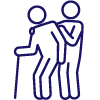- 요코하마시 톱 페이지
- 나카구 톱페이지
- 여러 단어 (Multilingual)
- English
- Public Relations Magazines
- Koho Yokohama Naka Ward Version(~2023)
- 2022
- September You may live in a condominium, but you still need to be prepared for disasters!
여기에서 본문입니다.
September You may live in a condominium, but you still need to be prepared for disasters!
This is an abridged version of “Koho Yokohama Naka-ku Ban,” Naka Ward Office’s public relations magazine. (Click here for the multilingual website of “Koho Yokohama City Edition”) Please note that all information is correct as of the time of publication and may be subject to change.
Last updated date:2024/10/3
You may live in a condominium, but you still need to be prepared for disasters!
[Inquiries] Shomu-gakari (General Affairs Section),Naka Ward Office
Tel: 045-224-8112 Fax: 045-224-8109
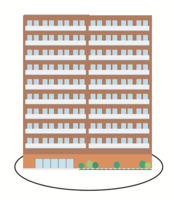
Common belief holds that reinforced concrete buildings such as condominiums have high earthquake resistance and are therefore less likely to collapse due to an earthquake. However, even if you live in a condominium, it is important to be prepared in advance in case of an emergency.
Just because you live in a condominium, it doesn’t mean that you don’t need to prepare for disasters
High-rise condominiums have been flooded in past disasters. In some cases, elevators could not be used due to damage to electrical equipment, and the water supply was cut off because water could not be pumped up to households, making it impossible to secure water for daily use. In addition, because water supply and drainage facilities are shared, improper use by one household affected many households when the facilities were damaged. Furthermore, in some cases, even if the building itself was not damaged during the earthquake, people were injured by furniture falling over due to long-period ground motions.
You need to understand the dangers and take precautions!
Know the types of risks specific to condominiums and steps you can take to mitigate them
1. Damage caused by shaking
On upper floors, long-period ground motions, which are large, slow tremors, can cause furniture and appliances to fall over or move significantly.

Measures
- Install equipment to prevent furniture from toppling over, such as tension poles or L-shaped brackets
*The City of Yokohama provides assistance with the installation of such equipment. (Subject to certain conditions)
⇒ Measures to Prevent Furniture from Toppling Over (Japanese only)
- Cover windows with shatterproof film
- Install latches on cupboard doors to prevent them from opening

L-shaped brackets
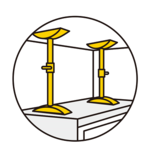
Tension poles
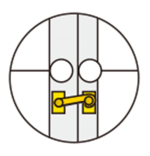
Latches

Shatterproof film
2. Damage to water supply and drainage facilities
When the water supply stops, you cannot flush or use the toilet. It is possible to flush the toilet with leftover bath water, but if the drainpipes are damaged, there is a risk of sewage leakage or backflow. If the toilet is used without checking for damage to the drainpipes, sewage may leak into the room below, causing problems between occupants.
Measures
- Stockpile toilet packs
- Stockpile large quantities of drinking water and water for daily use
- Set rules for using the toilet during disasters through discussions with other residents (e.g., use toilet packs and do not flush until the drainage pipes are inspected)

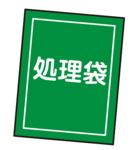

3. Elevators stop due to power outage
If there is a power outage, elevators will stop and evacuation will be difficult. Even if the elevator is running, aftershocks may occur, so it is necessary to evacuate via the stairs instead of the elevator. If you are in an elevator when a disaster occurs, press the buttons for all floors and get off at the floor where it stops.
Measures
- Each household should prepare more supplies than necessary in advance, especially those living on upper floors, as it will be difficult for them to move around and transport supplies up to their homes
- Consider stockpiling water and toilet packs in elevators in advance in case people become trapped inside

It is also important for residents to cooperate with each other!
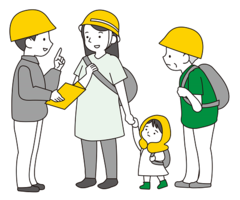
In condominium buildings, cooperation among neighbors (for example, residents on the same floor) is especially important. Look through communications from the management association, including notices of equipment inspections and disaster drills.
- Prepare disaster action plans in cooperation with the management association by knowing the number of households and age groups on each floor, etc.
- Consider measures to be taken by community disaster prevention organizations and ensure that people are able to take care of themselves, etc.
Here are some of the things we are doing Hisao Bando, Chairman of the Park City Honmoku Neighborhood Association

Left: Masaru Ito
(Chairman of the Park City Honmoku Management Association)
Right: Hisao Bando
At Park City Honmoku, we have been taking a variety of measures to ensure that residents are able to protect themselves from danger in the event of a disaster, including periodic disaster drills, creation of a disaster preparedness manual, and stockpiling of tools and equipment. In addition, we have prepared a system to identify people who are likely to be vulnerable in the event of a disaster because they are unable to evacuate quickly (i.e. persons in need of assistance during a disaster), such as the elderly and infants, and to confirm their safety and assist them in evacuation in the event of an actual disaster. We would like to work on disaster countermeasures for our condominium with the cooperation of the management association as well as the condominium’s neighborhood association.
Examples of specific initiatives we have taken
Disaster drills
We hold an annual disaster drill, held jointly by the neighborhood association and the management association. All residents are invited to participate in the drills, which are conducted with the cooperation of the fire department.
Manual
At our condominium, we have created our own disaster preparedness manual. The manual provides specific examples of what to do during and after a disaster, and gives advice on how to be prepared on a daily basis.
Stockpile of supplies
Our condominium has a stockpile of daily necessities such as food, first-aid supplies, and portable toilets, as well as equipment such as power supplies, generators, and wheelchairs. We will make sure that residents are aware of what supplies are stockpiled and that the equipment is ready for use at all times.
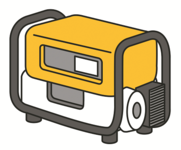
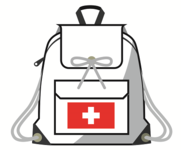

Evacuation shelters
In the event of a major disaster, it may be difficult to remain in one’s home. The City of Yokohama designates nearby municipal schools and other facilities as designated evacuation sites, and as evacuation shelters, they are equipped with emergency stockpiles, which are stocked with disaster preparedness materials and equipment, food, and other items. They also serve as bases for distributing supplies and information to those seeking refuge in their own homes and for rescue and relief operations by residents. Evacuation shelters are opened by local residents in the event of an earthquake of intensity 5 or higher, allowing people to evacuate their homes when they need to. Since they are operated mainly by local residents, please assist in their operation when evacuating.
⇒ Evacuation shelters
In times of disaster, it is also important to gather information!
■ Yokohama City Disaster Prevention Information E-mail
Disaster prevention information such as earthquake seismic intensity information and weather warnings and advisories is distributed via e-mail. Be the first to get disaster prevention information.
■ Marine FM 86.1MHz (외부 사이트) (Japanese only)
Marine FM, a community broadcasting station in Naka Ward, cooperates with Naka Ward Office in times of disaster to provide detailed information on disasters in Naka Ward.
■ Yokohama City Evacuation Navi (Japanese only)
Yokohama City Evacuation Navi is an app that supports the evacuation activities of each individual in an integrated manner, from “now” (normal times) to “when disaster strikes” (times of emergency).
페이지 ID:948-393-543








